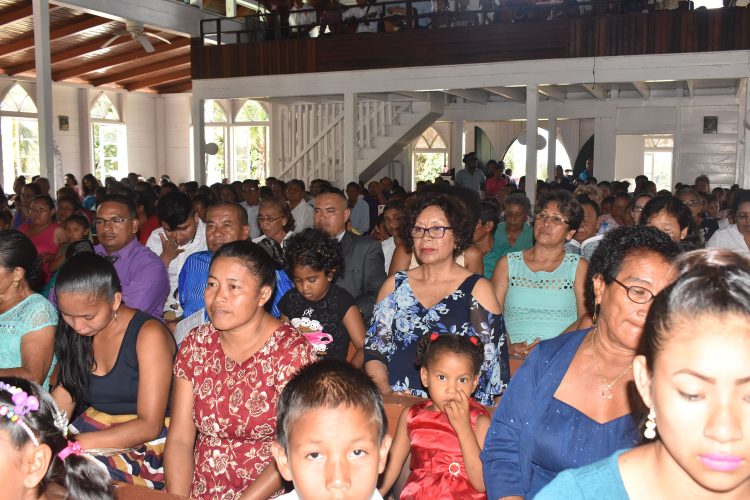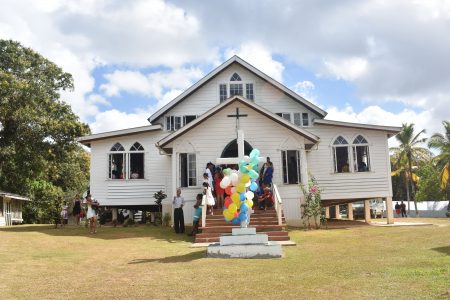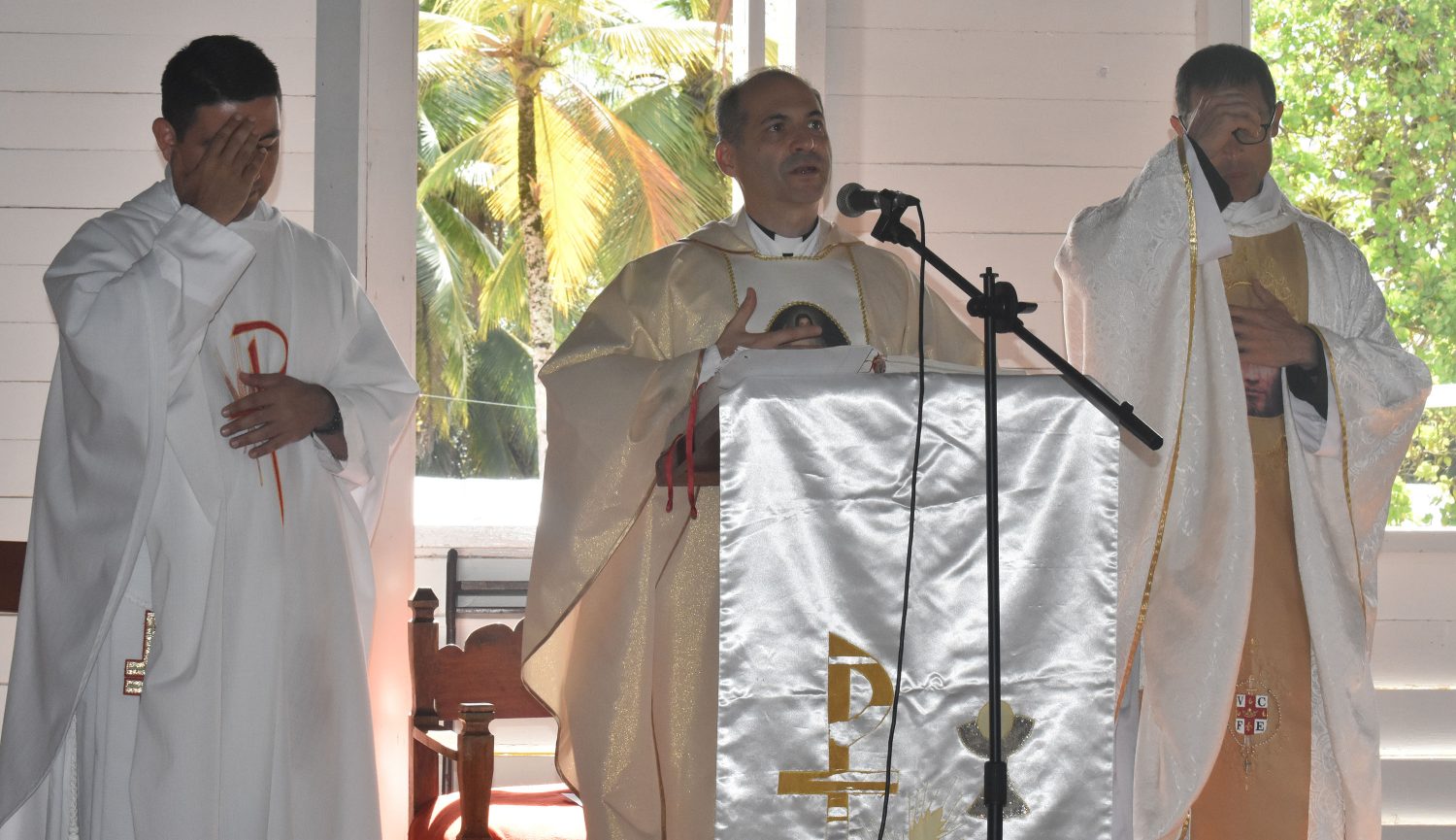The Santa Rosa Roman Catholic Church marked its 200th anniversary on Sunday and Bishop of the Diocese of Georgetown Francis Alleyne has said the history of Roman Catholicism in Guyana is linked to the establishment of the church.
The church was founded on April 1st, 1818, preceding the establishment of the Roman Catholic Diocese in Georgetown.
In his homily at Easter Monday’s mass, held at the historic church at Santa Rosa, Moruca, Bishop Alleyne also noted that the development of the people and the most densely populated indigenous community is linked to the church. The church established the Santa Rosa Primary School, which for over a century was known as the Santa Rosa RC School.
Bishop Alleyne was one of two high ranking officials of the church to journey to the riverain community over the Easter weekend to celebrate mass with the congregation to mark the anniversary.
On Easter Sunday, South American Provincial Superior of the Institute of the Incarnate Word (IVE) Fr Alberto Baratero officiated at the anniversary mass. Concelebrating the mass were parish priest Fr Pedro Torres and assistant parish priest Fr Martin Mairena.

Also among those present at Sunday’s mass were representatives of branches of the church that played a role in the parish at some periods in time. They included the Society of Jesus (Jesuits), Sisters of Mercy, and the Servants of the Lord and the Virgin of Matara. Also present were government officials, including Minister in the Ministry of Amerindian Affairs Valerie Garrido-Lowe, as well as a number of sons and daughters of the area who visited just for the occasion.
In an introduction, layman and councillor Graham Atkinson gave a brief history of the return of the Arawaks, Caribs and Warraus to then Mariaba (as Santa Rosa was then called)—which they had previously occupied—from the Orinoco Delta in Venezuela during the Simon Bolivar revolution. During that period, he said, Bolivar and his band of revolutionaries were trying to stamp out the Roman Catholic faith in the Orinoco Delta.

At the time, Atkinson said, some 500 people paddled their ‘corials’ (canoes) over a six-month period to the area to resettle.
Santa Rosa has always held a special place in the Roman Catholic faith in Guyana and many priests, nuns, deacons and laymen and laywomen have nurtured the faith, he said.
“History tells us that for the first 12 years there was no priest to administer to the faithful. It was a visiting Anglican official who made representation to the governor of the day for us to have a Roman Catholic priest,” Atkinson said.
From word of mouth, he said, he heard of the troolie-thatched structures that were built to the present day wooden church, which also served as a school until the one school building could no longer accommodate all the students and several other buildings were added.
The school, Atkinson told Stabroek News, has produced many outstanding personalities, including the country’s first indigenous Member of Parliament Stephen Campbell. Several government ministers and members of parliament, including Carolyn Rodrigues, Vibert De Souza, Pauline Sukhai, and Garrido-Lowe had their primary education at the school, as well as professionals in many fields, such as medicine, law and nursing.
“In fact, the school,” he said, “has produced educators at every level and have supplied many educators to various parts of the hinterland, but mainly the Rupununi, where they also took the Catholic religion with them.” They include many who also took up leadership roles as toshaos wherever they served.
The 200th anniversary celebrations will continue throughout the year. This week of celebrations will include a cultural presentation each night, at which some of the community’s outstanding personalities will be featured. The week’s activities will end on Friday with a camp fire.
The year-long activities to mark the anniversary will continue in June with the festivities associated with St John’s Day, another historic day in the calendar of the church at Santa Rosa.






